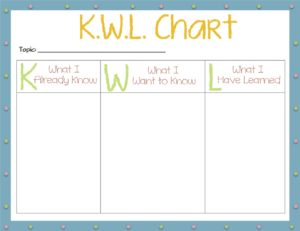Engaged Thinking
Another year-long goal would be to foster engaged thinking. If students are able to understand what they are doing and have strategies in place to help them achieve understanding, then they are more likely to succeed academically in your class and in the future.
There are many different comprehension strategies a teacher can use to help students become engaged thinkers. In early years such as preschool or kindergarten, a teacher can use different strategies and talk about them in authentic terms so that students become familiar. Starting as early as first grade, it’s important to teach students the strategies so they can be used in all kinds of learning situations. The following are just a few of my favorites. I also encourage you to watch the video of a teacher actually teaching some comprehension strategies and what they mean. It’s a great lesson, but strategies should be taught in context so they are more likely to be remembered in a variety of situations.

The first and probably most important strategy to engage thinking is to activate background knowledge. Learners think about what they already know so they can then connect it to what they are going to learn. A good instructional tool for this is a K-W-L chart. It stands for Know, Wonder, and Learned.
Two other important comprehension strategies are determining importance and drawing inferences. Determining importance gets students to concentrate on the big ideas about what they are learning. It also helps them to avoid becoming overwhelmed with information. When a student does need the extra information, though, he or she can draw inferences from a text to read between the lines and grasp meaning that isn’t as explicit as a big idea might be.
Another great way to engage thinking is by questioning. Teachers can give students questions to ask as they read a text, are constantly asking questions during instruction, and can use questions to guide students thinking as well as clear up confusions. You can see more about questioning including information on Bloom’s taxonomy here.
One last comprehension strategy I am going to mention is summarizing. Learners paraphrase the big ideas to create a concise statement. This helps with recall as well as overall understanding. Summaries can be written down or drawn using charts or illustrations.
You can see another post here that talks about the problem-solving guidebook. Providing step-by-step guides like this is a great way to scaffold learning and engage thinking.